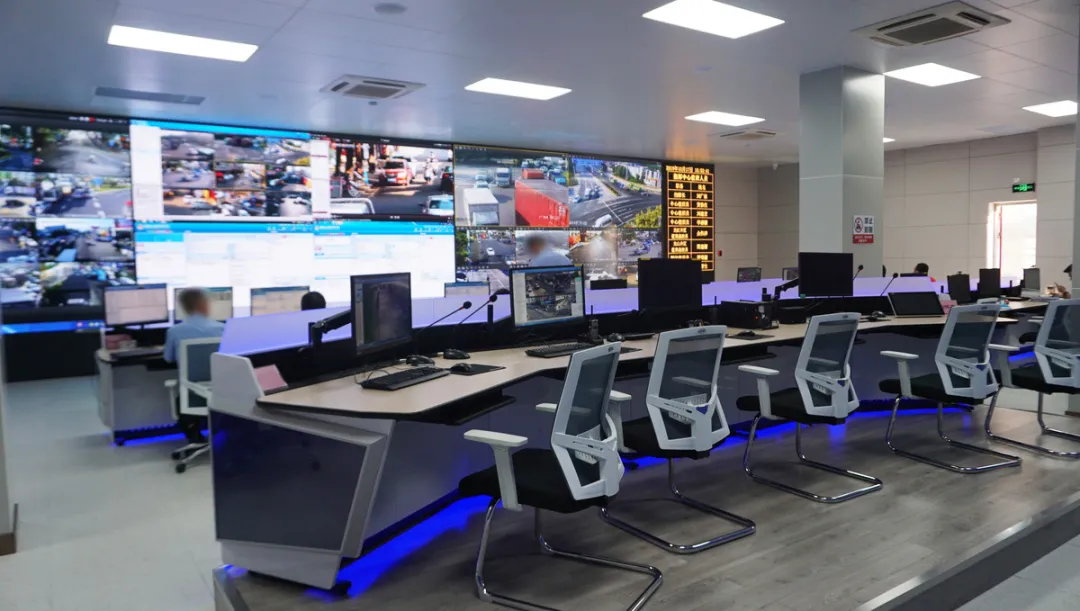Have you ever wondered how a police control room works? Is it like how the police arrest suspected fake currency exchangers and other criminals with the help of cameras? Does one person run the whole show of keeping an eye on all the suspects? I'm sure you have a lot of questions about this, and that's why I've written this post – to answer your questions.

The control room is the nerve center of the police. It is where the entire policing operation from start to finish is monitored, coordinated, and directed by staff, who are responsible for providing support to all other forces and divisions firsthand.
In a police control room, there are three central functional units:
1) Operations Unit - This unit controls the operations of all sections and units under the command of CP. The Operations Unit is headed by an Assistant Commissioner of Police (ACP). The ACP ensures that all sections operate effectively and efficiently with an adequate workforce and resources. He also oversees the overall operations of the command within his area of jurisdiction.
2) Information Technology Unit - This unit provides technical support to all sections within the command. All communications between different areas will be handled by this unit, which includes telephone lines and computers. In addition, it also takes records management for police personnel and operational matters such as crime statistics and incident reports, among others.
3) Logistics Unit - This unit manages logistics for all departments under command, including personnel, vehicles, office equipment such as computers, etc.
The police control room is the central hub of all police activity, and it is responsible for handling all calls from the public. The main objective of the control room is to take down information about an incident as quickly as possible so that officers can be sent to the scene.
The call center is staffed by a team of operators who answer incoming calls and assess whether they require emergency assistance. If so, they will direct callers to call 999 or 101, depending on their location within the UK. Operators are highly trained in emergency procedures and provide updates on the status of incidents as they develop over time.
Once an incident has been reported, operators will ask callers questions: "What is your name?" "Where are you located?" "What happened?" "Are any weapons involved?" This information is used to track down details about potential offenders or victims involved in criminal activity. Appropriate action can be taken early before more severe consequences occur later on during investigations into illegal activity occurring within communities throughout Britain's cities and towns."
The control room console of the police will also handle non-urgent calls and inquiries and even take reactions to crime. Your call is answered by a trained operator who takes your details before logging in. The police have a set protocol for taking care of the problem reported on their desk so that no time is wasted in reaching the emergency site.
The operator logs all relevant information about the situation and then directs you to the section or unit responsible for handling such cases. If possible, they will connect you to that person directly so that you can explain what happened and what exactly needs to be done next.
They may also ask for more details if needed before connecting you to someone else who can help solve your problem better than them (e.g., explaining how exactly an accident happened).
In police control rooms, calls are directed to the right person or department in the organization. This system is designed to help ensure that the right resources are deployed to address potential incidents. Officers are typically assigned to specific areas of the control room, and they are constantly monitoring calls for possible emergencies. If a call appears to be an emergency, officers will immediately dispatch appropriate resources.
In addition to monitoring calls and dispatching resources, officers are also responsible for recording information about each call that comes into their location. That includes details, such as an incident that occurred during the call and the type of response required from law enforcement officials. When necessary, officers may also need to gather evidence at the scene of an incident. Before transporting it back to headquarters for further analysis or storage until it can be used in court proceedings. Against someone who breaks laws related to public safety issues such as speeding tickets or drunk driving accidents involving minors under 18 years old (or 21 years old depending on state laws).
There are three types of control rooms in the police world: tactical control rooms, command control rooms, and traffic control rooms.
1) A tactical control room is where the police can use lights and sirens to speed up different emergency scenes.
2) A command control room has a wide range of tools at its disposal, from having access to live video feeds from both local and state police cameras placed around a city and access to databases that contain information on suspected criminals.
3) A traffic control room helps manage field operations and support incident management teams during critical incidents or major events by monitoring incoming radio calls, coordinating response activities with dispatch centers, providing a visual display of field activity on incident maps, and providing real-time updates on traffic conditions throughout the city via social media platforms such as Twitter and Facebook.
The police control room can significantly impact the community because their services and information to the community, such as police calls for help or information about crime or criminals, should focus on giving accurate information to the public. Control rooms provide contact between the people and the police to ensure a good relationship.
If you want to make your community safe, you can start by checking how your local control rooms work.
4 tips for choosing command center control room console furniture
6 tips for how to plan your control room desk design